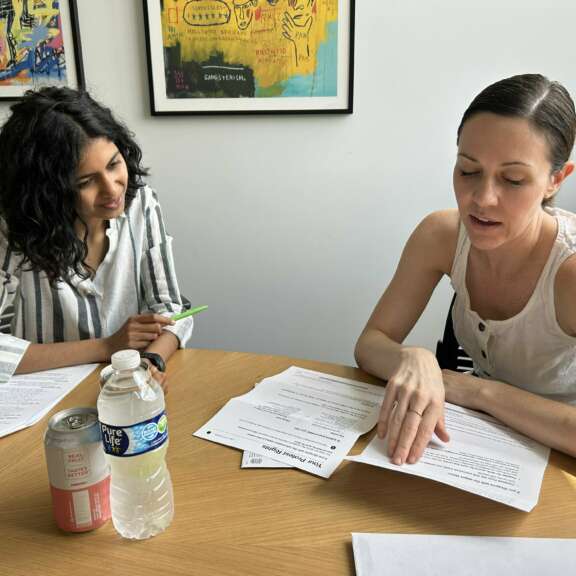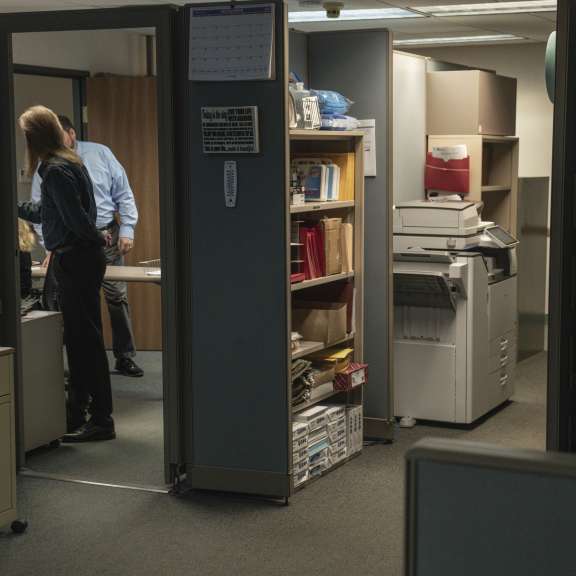A better way to track your benefits
Designing the country’s first benefits application tracker

Each year, more than a million Michigan residents apply for public benefits online.
Through Civilla’s long-time work with the Michigan Department of Health & Human Services (MDHHS), we’ve been able to understand the ecosystem that supports Michigan’s residents to put meals on the table, access affordable childcare, and ensure their families stay healthy.
After partnering with MDHHS to redesign its application, renewals, and MI Bridges online portal for more efficient benefits delivery, our teams began to explore a big question. How could residents actually track the status of their applications without creating a larger burden on state staff?
That question inspired an innovative solution, making Michigan the first state to implement a benefits application tracker to streamline service delivery. The inspiration came from an unexpected source:
Domino’s pizza
Back in 2007, the fast-food pizza chain filed a curious patent, titled “Method and system for centralized order status tracking in a decentralized ordering system.” What this technology introduced was in fact much simpler than its quite complicated name suggested. It was, in essence, a progress tracker.
The Domino's pizza tracker is an online tool that lets customers monitor the progress of their pizza order in real-time, from preparation to delivery. People love it because it provides transparency and reassurance, showing exactly when their pizza will arrive.
Like us, designers and public servants began to take note of the impacts of this technology. This digitally powered tool created transparency from order, to process, to delivery. By centralizing information, it was able to answer users’ questions and, in turn, moderate their concerns.
What possibilities could there be, if this technology were transferred to support human services too?
Meeting users where they are

When the project began in late 2022, a big part of the journey was recognizing the relief that clear communication can provide for people who are applying for benefits.
“At the end of the day, we want to take the burden off the resident."
– Paula Kaiser VanDam, Bureau Director at MDHHS
Adopting this shared goal, while also focusing on de-burdening staff, we prioritized learning from users’ voices firsthand.
First, we first interviewed residents. From sitting down with them at their kitchen tables to having conversations over Zoom, we were able to identify common pain points. We also interviewed MDHHS caseworkers and community partner organizations - observing office interactions and shadowing them while they fielded inquiries about applications.
This process lifted up the challenges that each group encountered at different stages in the benefits process.
A new opportunity for transparency
One of our primary research findings was residents’ frustration around not knowing the status of their benefits application. Bambi Burnham, MI Bridges Product Lead, cited one bleak user sentiment that put the uncertainty into perspective: “‘When I apply, it [feels like my application] just goes into a black hole.’”
To unlock essential support for their families, Michigan residents who seek public benefits are motivated to do everything they can to ensure their applications are successful. But once residents submitted their applications, the next steps weren’t clear.
The implications of this lack of transparency meant that applicants were in limbo as they waited for paper mail to notify them of their status. State workers, on the other hand, were overwhelmed on the daily with residents checking in to clarify their next steps.
Alongside MDHHS, we centered these concerns, remaining focused on the idea that residents should be reassured about what stage their application was in, and feel clear about the next steps in the process. Together, we aligned with MDHHS around a shared vision: to design an application tracker that enabled residents to follow the status of their case in real time, and complete required actions.
“This innovative tool will allow residents to know the exact status of their benefits application 24/7 and help them prepare for any next steps.”
– Elizabeth Hertel, MDHHS director
Building the Application Tracker
Grounded in a strong understanding of user needs and MDHHS’ technology capabilities, our team began the prototyping process to develop potential application tracker designs. Our Design Director, Sam Brennan put the goal in simple terms: “We wanted residents to feel clear and confident through every step of their application journey. And we wanted to ensure MDHHS had the technical capabilities to make this possible.”

We moved quickly throughout the design process. Leveraging insights from user research, we were able to develop proofs of concept in two months’ time. We tested our prototypes with residents and staff to gauge users’ feedback on the new tracker’s usability.
Designing, testing, and iterating allowed us to deliver recommendations for an application tracker, with rationale from our research supporting each of the design options.
“The team behind the work matters. I was struck by the knowledge we were building on within Civilla and MDHHS, to bring this vision to reality. That was only possible because of our 7+ years of prior partnership together”
– Sam Brennan, Design Director at Civilla
Seeing through to implementation
After Civilla completed research, design, and an initial feasibility assessment, we handed off our recommendations to MDHHS for implementation. The state undertook many months of internal technical work to bring the application tracker to reality.
MDHHS worked across the policy, legal, operations, eligibility and technical teams to ensure alignment. The technical team worked hand in hand with eligibility to translate program rules into technical requirements. In addition, the eligibility team provided invaluable insight into how each program operates to ensure that the application tracker accurately reflected next steps for residents.
MDHHS and their technical team developed a new API that allowed critical information to be pulled without impacting system performance, all while preserving the original vision of the tracker. This collaborative effort not only made implementation possible but it also resulted in the creation of reusable tools, such as the API, which will support future improvements to the MI Bridges platform.
“The tracker is something we wanted to do immediately. But since we're an integrated eligibility system, we had to work with so many other integrations,” said Bambi. “ It took a long time to be able to do it because we wanted to align priorities and do it right.”
A model for the future
Now that the new MI Bridges applications tracker is live, residents can apply, track, and monitor their benefits application status from start to finish - all from their mobile phone.
“It gives you some hope. It’s coming. At least a decision will be made.”
– Michigan resident
As the application tracker helps support a smoother process for residents to access services, its improvements have also benefited frontline staff and MDHHS more broadly. “We know that when we give more tools to the resident, it reduces calls to the offices, and it reduces duplicate applications,” Burnham says.
The state has seen the immediate results of this symbiotic efficiency. With 60-70K users per week, the application tracker led to a 14% decrease in calls to MDHHS support staff shortly after launch.
These outcomes highlight the benefits of using human-centered design to solve complex challenges. Throughout the implementation process, Michigan stayed focused on the needs of residents and frontline staff. By working alongside users to set a vision for the product, the state was able to bring a long-standing dream to reality. And everyone benefited in the process.

“We’re aiming to look at how to maintain and sustain what we’ve done, and use that as a building block for moving forward. What we have is really good. I’m excited about being strategic about what comes next.”
– Robin Grinnell, MI Bureau of Community Services
Beyond Michigan, this work also offers a replicable model that other states can follow to use government technology in progressive ways. The success of the application tracker showcases one of the many ways that bringing imagination into government technology can help support stronger public services for all.
Learn more with our case study here.


